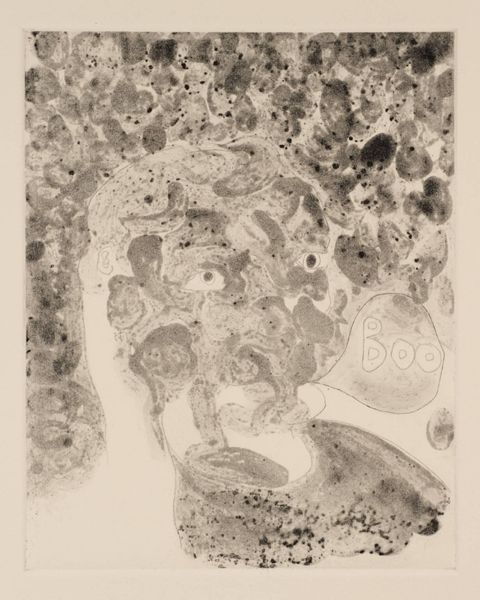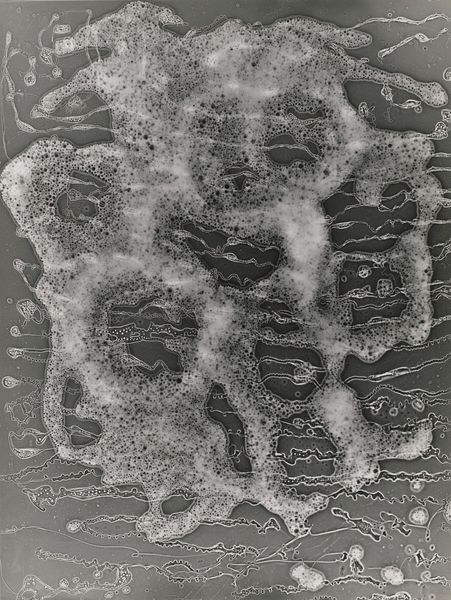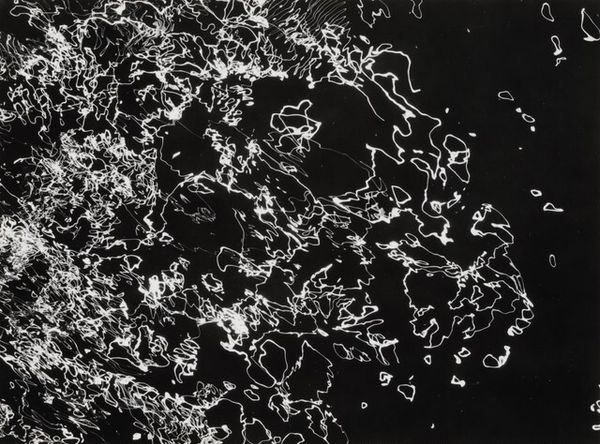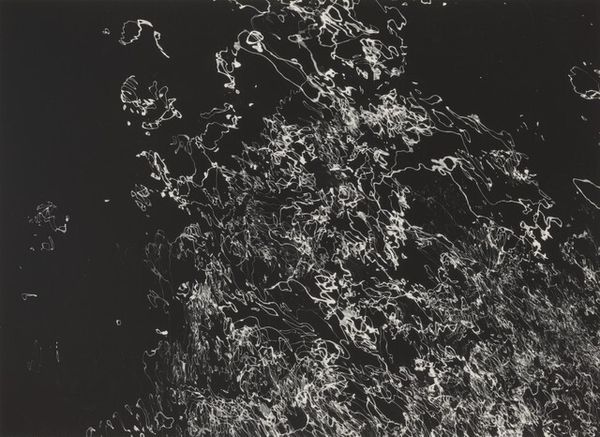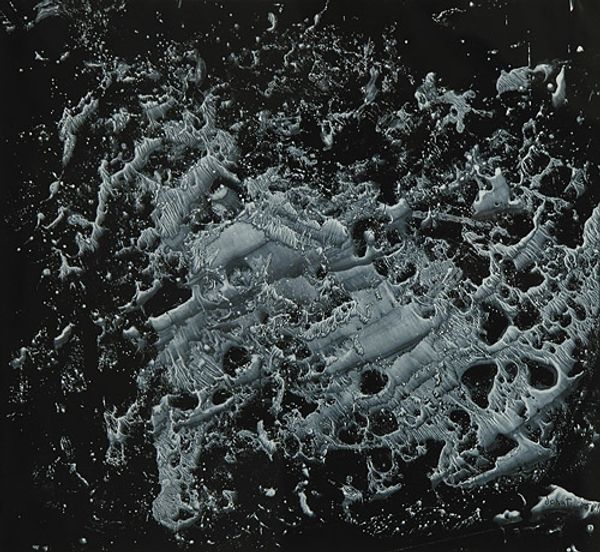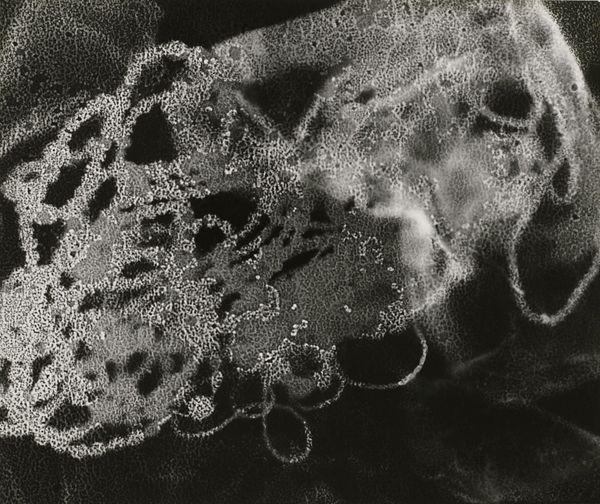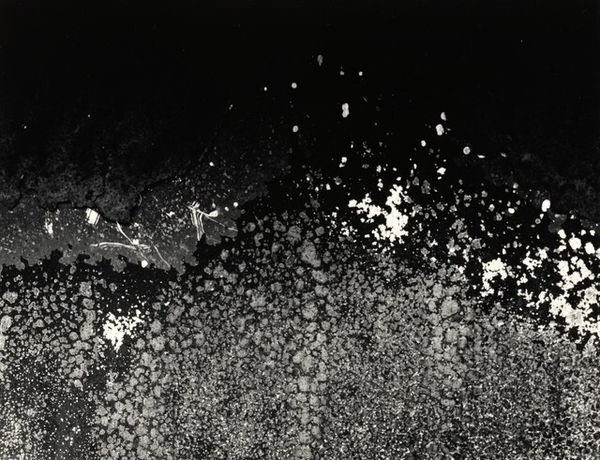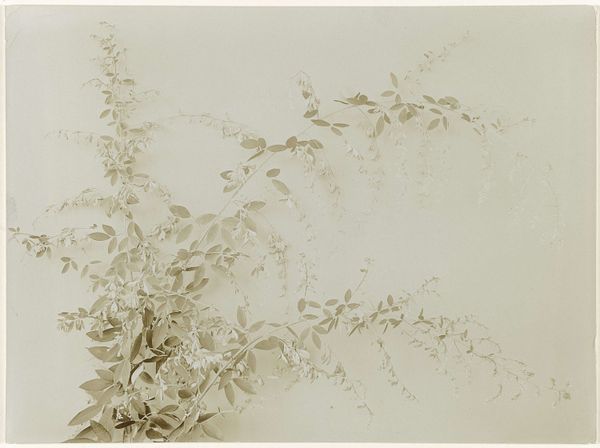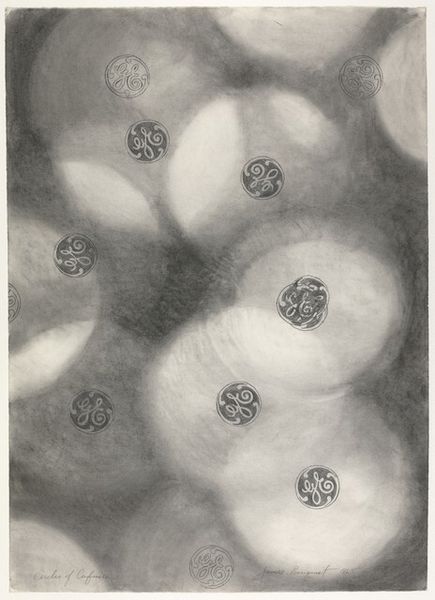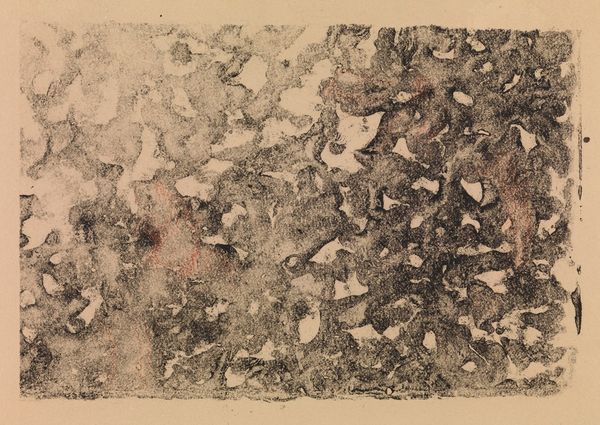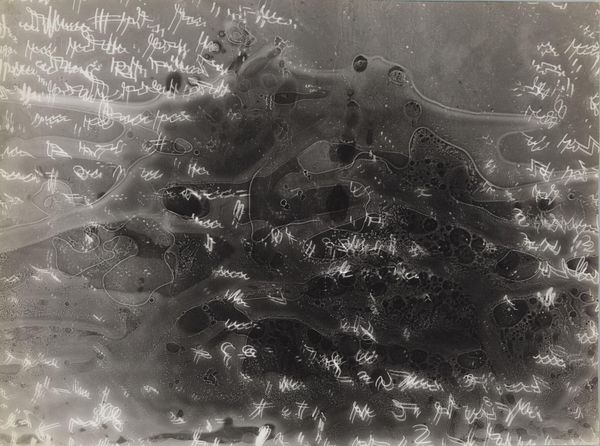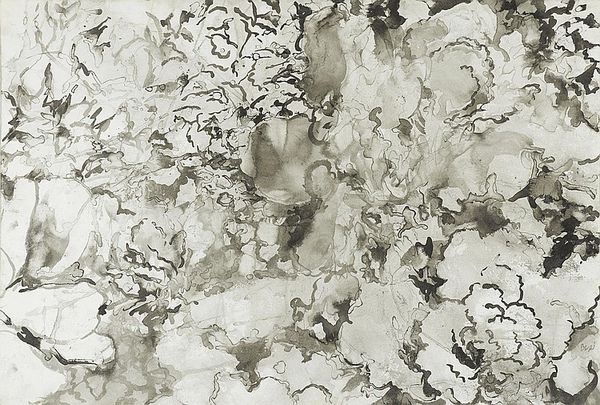
mixed-media, print, photography, decalcomania, frottage
#
abstract-expressionism
#
abstract expressionism
#
mixed-media
# print
#
textured
#
photography
#
decalcomania
#
matter-painting
#
abstraction
#
frottage
#
monochrome
Copyright: Enrico Donati,Fair Use
Curator: Let's consider Enrico Donati's "Decalcomania" from 1947, a mixed-media work incorporating printmaking, photography, frottage, and matter-painting techniques. Editor: The high contrast and layered textures give it such an unsettling and almost alien landscape feel, despite being monochrome. It’s visually jarring, and strangely compelling. Curator: The image is dominated by what appears to be the Decalcomania itself—that is, paint purposefully pressed and peeled to reveal these evocative textures and forms. Look at the ridges and crevices. Semiotically, they function almost like palimpsests, suggesting buried narratives. Editor: It evokes the post-war atmosphere, the sense of fragility and destruction after World War II. Donati, as a Surrealist exile in New York, would have been navigating themes of displacement and trauma through abstraction. The process he uses—decalcomania, frottage—echoes this; he’s literally taking rubbings from, or pressing onto, unseen or unheard narratives to reveal traces of memory, right? Curator: Exactly. The lack of representational form draws attention to the materiality itself. It makes us question how meaning is constructed through the physical properties of the artwork, by pushing these boundaries between painting and sculpture. Editor: And it makes me consider what these textures mean, beyond mere aesthetics. Is Donati hinting at the emotional scars of the period, the anxieties bubbling beneath the surface, not just for himself as an exiled artist but for many impacted by these times? Curator: The biomorphic shapes invite a psychological reading. Their ambiguity becomes the very vehicle for projecting fears or perhaps even new hope, reflecting art’s important role as both social and cultural reflection. Editor: Right. This piece offers more than just textural novelty, but prompts reflection on the sociopolitical moment in which Donati created it. Curator: Absolutely. It leaves me contemplating how a monochrome and seemingly abstract piece can still spark meaningful dialog about our perceptions of form. Editor: And for me, how these abstract choices function in speaking powerfully and symbolically of this turbulent past.
Comments
No comments
Be the first to comment and join the conversation on the ultimate creative platform.
